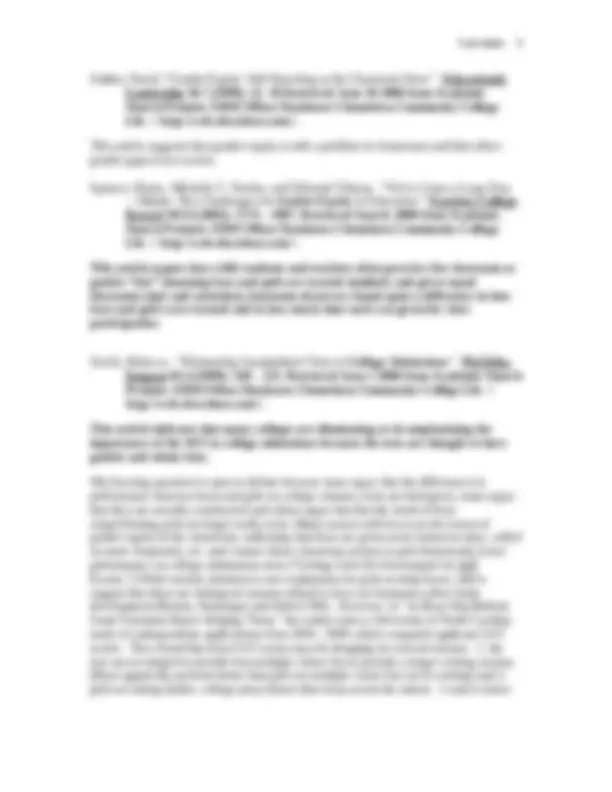




Study with the several resources on Docsity

Earn points by helping other students or get them with a premium plan


Prepare for your exams
Study with the several resources on Docsity

Earn points to download
Earn points by helping other students or get them with a premium plan
Community
Ask the community for help and clear up your study doubts
Discover the best universities in your country according to Docsity users
Free resources
Download our free guides on studying techniques, anxiety management strategies, and thesis advice from Docsity tutors
The gender gap in college admission tests, focusing on why females tend to score lower than males. The research question is addressed through supplemental questions that delve into the types of admission tests, the existence and extent of the gender gap in undergraduate and graduate tests, historical context, test formats, and potential explanations such as anxiety, learning styles, and biological differences. The document also discusses the implications of these findings and potential solutions.
Typology: Papers
1 / 4

This page cannot be seen from the preview
Don't miss anything!



Note, comment inserts in this paper have altered its margins. Margins should be 1 to 1.25 inches around. Author’s name 18 October 2006 Darby Proposal Gender Equity in College Admission Tests RESEARCH FOCUSING QUESTION Why do females tend score lower on college admission tests than men? SUPPLEMENTAL QUESTIONS
verbal section of the exam. It suggests that females experience higher test anxiety and offers practical suggestions for reducing it. ---. “Getting Girls De-Stereotyped for SAT Exams.” Education Digest 70.1(2004): 43-
47. Retrieved June 1, 2006 from Academic Search Premier. EBSCOHost Databases Chemeketa Community College Lib. http://web.ebscohost.com. This article indicates that a gender gap in SAT performance is well-documented (males on average scoring higher on SAT tests than females). They found that many students are “aware” of the gender gap before going into the test and that students in one study performed according to their assumptions about gender performance. Students took a mock standardized test for which one group was told that males perform better and a second group was told males and females performed similarly. Both groups’ results coincided with the information about gender they were given prior to the test. “As Boys Slip Behind, Some Feminists Reject Helping Them.” **USA Today Apr. 24,
more about the causes behind gendered discrepancies in test results and, if the trend is reversing, more about why that is.